Flowers in Japan by Month: Best Destinations, Meanings, Tips

Discover Japan's flowers by month, exploring their symbolism and ideal viewing spots. From cherry blossoms in spring, lavender in summer, to autumn chrysanthemums, Japan offers stunning seasonal blooms worth traveling to see.
Japan's Seasonal Flower Calendar
One of the charms of Japan is that you can find seasonal flowers blooming throughout the year. From cherry blossoms in spring and vibrant lavender fields in summer, each month offers its own excitement and beauty.
In this article, we introduce some of Japan's most iconic flowers, highlighting their significance, blooming periods, and the best locations to see them.
Flowers in Japan by Month
January
1. Camellias (December - March)
2. Plum Blossoms (Late January - mid-March)
February
3. Wintersweet (January - February)
4. Narcissus (February)
5. Early Cherry Blossoms (February - March)
March
6. Cherry blossoms (Late March - May)
7. Tulips (late March - late April)
April
8. Shaga / Fringed Irises (April - May)
9. Peonies (April - May)
10. Nemophila (mid-April - early May)
11. Azaleas/Rhododendron (April - May)
May
12. Shibazakura: Moss phlox (May)
13. Lupines (mid-April - June)
14. Wisteria (May)
15. Irises (May and June)
16. Roses (early May - early June)
17. Poppies (mid-May - late May)
June
18. Hydrangea (mid-May - Late June)
July
19. Lotus flowers (mid-July - mid-August)
20. Morning glory / Heavenly Blue (July - August)
21. Lavender (mid July - early August)
August
22. Rengeshoma (False Anemone) (late July - early September)
23. Sunflowers (July - August)
September
24. Spider Lilies (mid-September - early October)
25. Silver Grass (late September - early November )
October
26. Kochia (October)
27. Cosmos Flowers (October - November)
28. Kinmokusei (Late September - October)
November
29. Chrysanthemums (September - November)
30. Gingko Foliage (mid-November - early December)
December
31. Maple Foliage (late November - early December)
Japanese Flowers in January
1. Camellias (December - March)
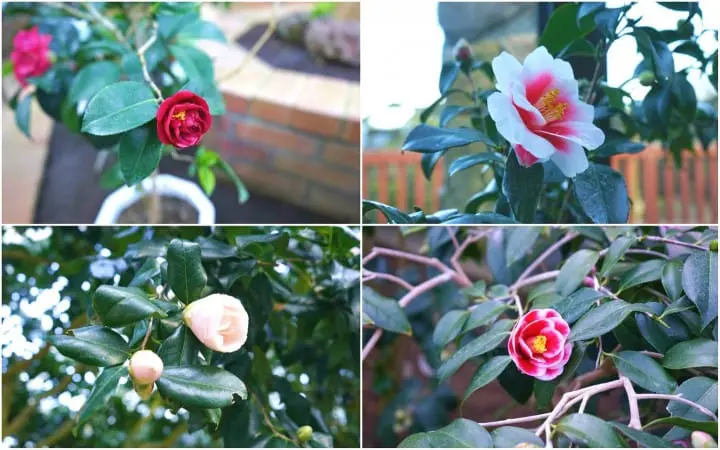
Camellias, known as Tsubaki in Japanese, have been cherished in Japanese culture for centuries. They appear on kimonos and decorations, and serve as seasonal motifs in tea ceremonies.
Because the petals of Tsubaki camellias don't scatter when they fall, they have been associated with the spirit of the samurai.
There are two main types of camellias in Japan: Camellia Sasanqua, which bloom in December-January, and the Tsubaki Camellias, which bloom in late February-March.
The main difference between them is that Sasanquas do scatter when they fall; they also have smaller leaves than the Tsubaki varieties.
Nevertheless, it's always impressive to see these vibrant blossoms in full bloom even during harsh winter days.
Tokyo's Izu Oshima Island is famous for its annual Camellia Festival held in March. Other great locations are the garden of Hotel Chinzanso Tokyo, which boasts an impressive variety of camellias from all the corners of Japan, and the Mt. Kasayama Camellia Grove in Hagi, Yamaguchi.
2. Plum Blossoms (Late January - mid-March)
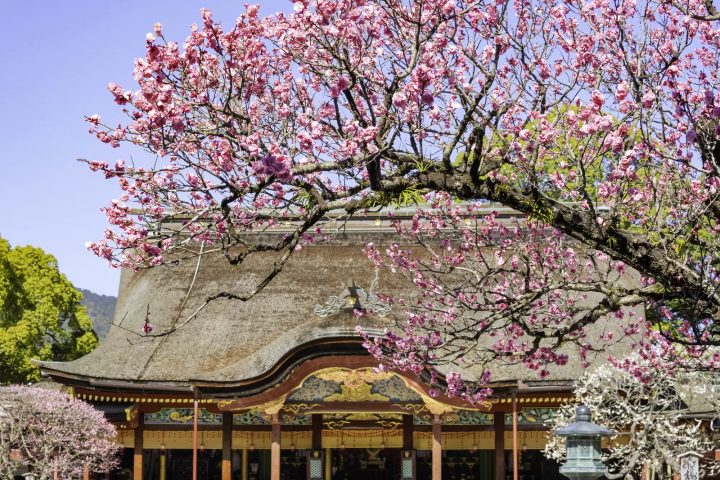
Photo by Pixta
One of Japan's most beautiful winter blooms, plum blossoms—known as Ume in Japanese—are an early sign that spring is just around the corner. With their vibrant pink petals forming small, charming clusters, plum blossoms are elegant flowers that have inspired Japanese artists, poets, and craftsmen for centuries.
Symbolizing resilience, strength, and perseverance, they represent hope and the arrival of spring. In traditional Japanese folklore, plum blossoms are also seen as symbols of good fortune and are believed to ward off evil spirits.
Each year, many people celebrate their return through flower viewing festivals called Ume-matsuri, and the blossoms are important in Japanese tea ceremonies and ikebana (flower arranging).
To see plum blossoms in full bloom, we recommend visiting Dazaifu Tenjin Shrine in Fukuoka, Jindai Botanical Gardens and Koishikawa Korakuen Garden in Tokyo, or the Kyoto Gyoen National Garden.
Flowers in Japan in February
3. Wintersweet (Robai) (January - February)
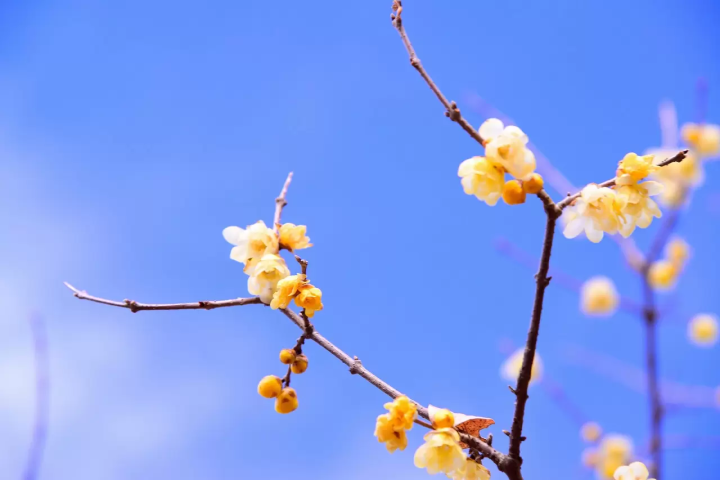
Photo by Pixta
One of Japan's cutest winter flowers, wintersweet (Robai in Japanese), is a treasured seasonal bloom. These small, bell-shaped flowers blossom at the start of each year, filling the crisp winter air with a sweet and spicy aroma.
Symbolizing resilience, beauty, and overcoming adversity, wintersweet blooms in cold, harsh months, making it a symbol of hope and renewal.
Throughout Japanese history, wintersweet has appeared in traditional arts, poetry, and literature—such as Hiroshige Utagawa’s Wintersweet and Camellias, pottery by the Songoku Kiln, and haiku by Matsuo Basho.
With its buttery yellow petals contrasting against blue skies, wintersweet provides a cheerful splash of color during the cold months. For a relaxing visit, we recommend Matsuda Yadoriki Roubai Park near Tokyo. Other great spots include Naritasan Shinshoji Temple in Narita and Shinrin Park in Saitama.
4. Narcissus (February)
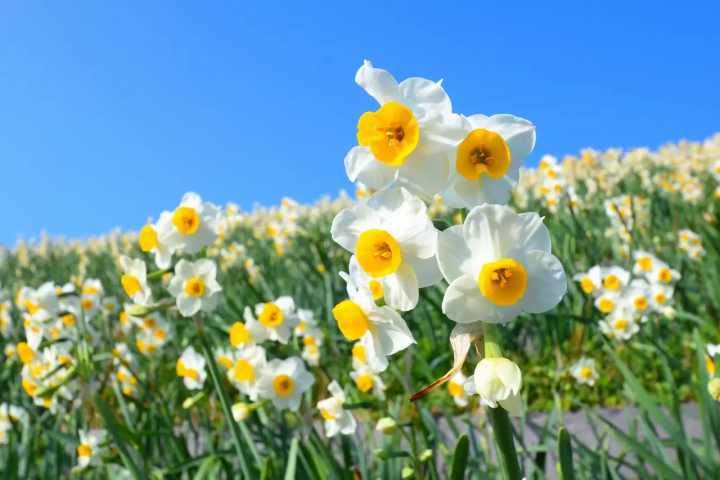
Photo by Pixta
In Japan, Narcissus is appreciated as a flower symbolizing purity and new beginnings. Since they bloom in early spring, they are often seen as a herald of the arrival of spring and the end of winter.
In Western cultures, narcissuses also symbolize self-love or self-reflection, but in Japan, they are more associated with purity and clarity.
In Japan, narcissus typically blooms from late January to February.
One of the best places to enjoy viewing the narcissuses near Tokyo is Jogashima Park, which is located on Jogashima Island and offers scenic views of the ocean best enjoyed while cycling.
5. Early Cherry Blossoms (February - March)

Kawazu-zakura are a deep pink variety of cherry blossoms that bloom in winter.
Unlike the softer and more delicate Somei Yoshino cherry blossoms, which bloom from late March to May, the Kawazu sakura blossoms reach maturity in late February and last through early March.
These blossoms are fuller and more vibrant in color and shape. As a species of cherry blossom, they symbolize fleeting beauty and remind us to cherish the present moment. They also represent new beginnings and hope.
During this season, many people travel to Kawazu, a small city in the Izu Peninsula, where the flowers originated, to enjoy flower viewing festivals celebrating their arrival. Other great spots to see Kawazu sakura include Matsuda, Atami, and Tokyo's Kyunaka River.
Read also
Flowers in Japan in March
6. Cherry Blossoms (Late March - April)
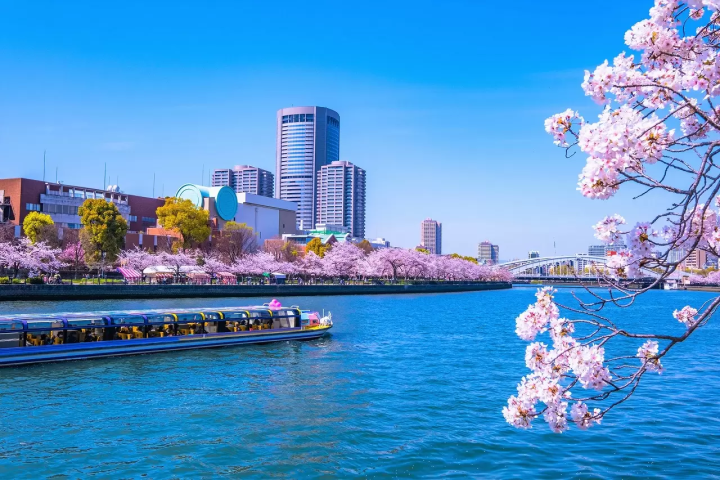
Photo by Pixta
Famous for its cherry blossoms, Japan comes alive each spring with clouds of pink flowers, creating snow-like petal storms across the country.
Symbolizing fleeting beauty, rebirth, and the impermanence of life, cherry blossoms are cherished in Japan and have held a special place in the hearts of the Japanese people for centuries.
The cherry blossoms bloom in late March in Tokyo, Osaka, and Kyoto, while in northern regions like Tohoku and Hokkaido, they can be enjoyed around late April.
Japan offers numerous iconic cherry blossom viewing spots. Some popular locations include Ueno Park in Tokyo, Okawa River in Osaka, Nara Park in Nara, and the Philosopher’s Path in Kyoto.
Read also
7. Tulips (late March - April)
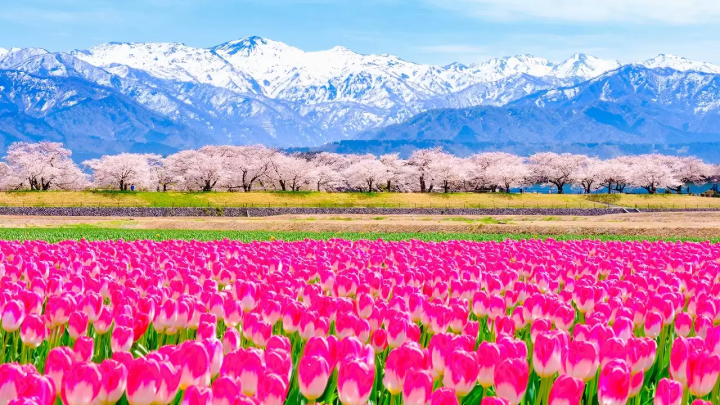
Photo by Pixta
Tulips are among the most popular flowers in Japan, creating picturesque gardens and inspiring floral artwork. The country boasts a wide variety of tulip cultivars and spectacular locations to admire these blooms in full splendor.
Symbolizing perfect love, abundance, and prosperity, tulips are sure to inspire awe at prime sites like Nasu Flower World in Tochigi and the Asahi Funakawa Spring Quartet in Toyama, where rows of tulips are backdroped by cherry blossoms and snow-capped mountains.
Read also
Flowers in Japan in April
8. Shaga / Fringed Irises (April- May)
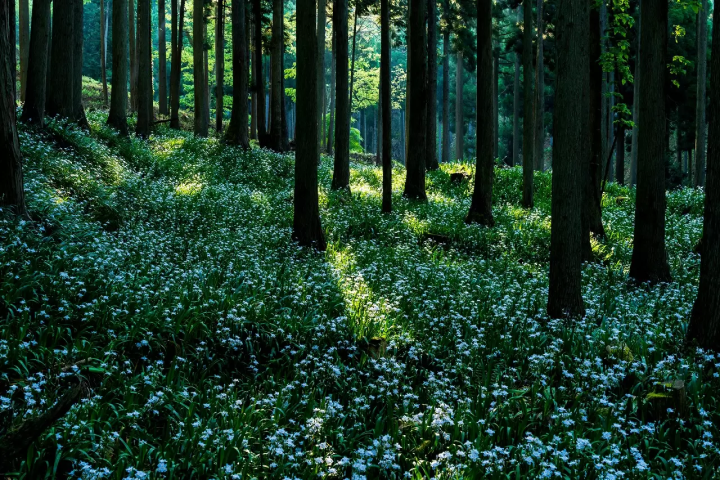
Photo by Pixta
Shaga, also known as Fringed Irises, are a rare and beautiful find when exploring Japan. These small, purple and yellow freckled flowers often bloom in lush woodland areas, easily recognized by their delicate, fringed petals and gentle colors—earning them the nickname "Butterfly Flower."
Symbolizing refinement, sophistication, courage, and admiration in Japan, they have inspired many poems and literary works.
While shaga grows in various parts of Japan, Tokushima Prefecture is especially famous for these flowers. Visitors can enjoy viewing them at the Iris Gardens of the Otsuka Museum of Art and Awa Odori Kaikan. Additionally, we recommend visiting the Fringed Iris & Oriental Paperbush Meadow in Ayabe City, Kyoto.
9. Peonies (April)

Brimming with elegant, layered petals in vivid red, pink, and white, peonies are a beloved flower originating from Asia and cherished in Japan for centuries.
Peonies frequently appear in traditional Japanese art, ceramics, and textiles, representing good fortune, prosperity, longevity, and happiness. They are often used as decorations in rituals, weddings, ceremonies, and festivals.
In Tokyo, you can see peonies in gardens and temples such as Nishiarai Daishi Temple’s Peony Garden, Yasukuni Shrine’s Peony Garden, Jindai Botanical Gardens, and Koishikawa Korakuen Garden.
10. Nemophila (mid-April - early May)
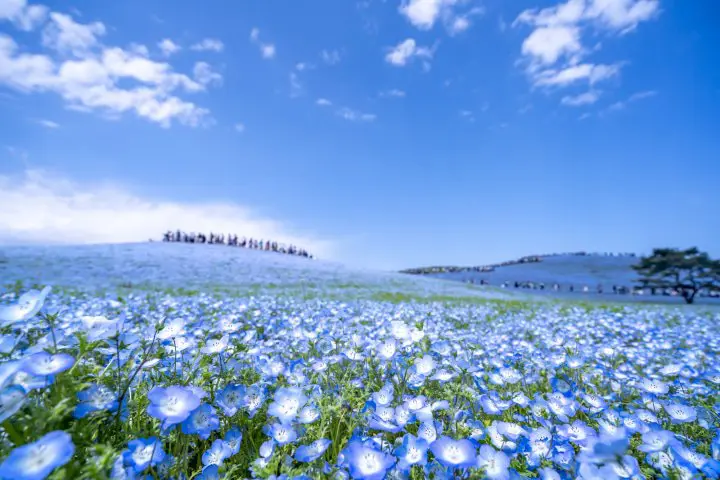
Photo by Pixta
Blooming in late spring, the nemophila, or Baby Blue Eyes, paint the fields with rolling waves of blue, creating a magnificent sight across Japan.
Symbolizing purity, clarity, and sincere love, these flowers are associated with hope, new beginnings, and genuine affection. Many visitors, especially in Tokyo and beyond, flock to see nemophila each year.
One of the most popular spots is Hitachi Seaside Park in Ibaraki, where approximately 4.5 million of these flowers bloom, forming an endless ocean of blue that stretches to the horizon. Under clear blue skies, the flowers create the stunning illusion of a world filled with blue.
Another notable location is Showa Kinen Park in Tokyo, a beautiful park that blooms with seasonal flowers and foliage year-round.
11. Azaleas / Rhododendron (April - May)
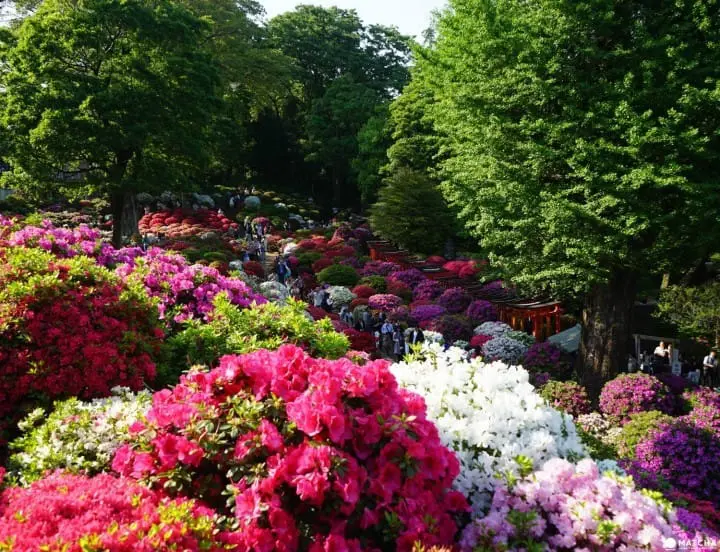
Stretching across Japan's gardens and natural landscapes, azalea flowers gained popularity during the Edo period after their cultivation. Today, they are featured in many parks and gardens, as well as in art, exhibitions, and festivals.
Azaleas symbolize passion, strength, and resilience, being associated with tranquility and inner peace.
In Tokyo, Nezu Shrine is a famous spring destination, where fluffy, round azalea bushes create a colorful, rolling hill of blooms. Other notable spots include Mifuneyama Rakuen in Saga, Shiofune Kannon in Tokyo, and Tsutsujigaoka Park in Gunma.
Flowers in Japan in May
12. Shibazakura: Moss Phlox (April - May)

Picture courtesy of PR Times
Shibazakura, or Moss Phlox, blooms after cherry blossoms fade, toward the end of spring.
These vibrant pink flowers adorn Japan’s natural landscapes, symbolizing beauty, tranquility, and unity. Parks featuring shibazakura offer peaceful, colorful displays that bring people together.
Popular spots to see shibazakura include the Fuji Shibazakura Festival with stunning views of Mt. Fuji, Hitsujiyama Park in Chichibu—just outside Tokyo, and Higashimokoto Shibazakura Park in Ozora, Hokkaido.
Read also
13. Lupines (Mid-April - June)
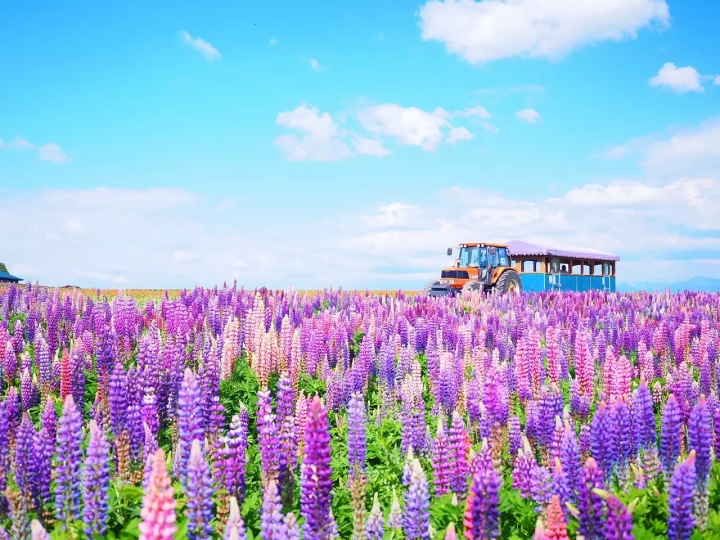
Photo by Pixta
Often an overlooked beauty of late spring, lupines—also known as nobori fuji (rising wisteria)—are spectacular flowers that flourish across Japan. Resilient and adaptable, they thrive in various climates, whether in gardens or wild areas, in a wide array of colors.
Lupines symbolize imagination, happiness, and positivity, making them perfect for stunning photoshoots.
While they can be seen in the wild, for breathtaking views and vast fields, we recommend visiting popular lupine spots such as Hokkaido Flowerland Kamifurano, Shikisai no Oka in Biei, and Musashi-Kyuryo National Government Park in Saitama.
14. Wisteria (May)
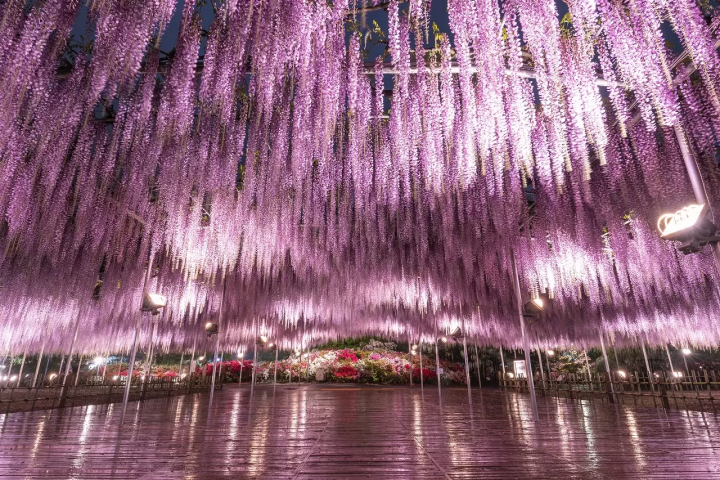
Photo by Pixta
Across Japan, wisteria drapes over ancient shrines, castle grounds, and stunning flower parks, showering these sites with lavender and white petals and filling the air with a sweet aroma.
Featured in Japanese folklore and poetry, wisteria symbolizes endurance, longevity, elegance, and beauty. Its mysterious, refined, and enchanting aura has inspired art throughout history, from Utagawa Hiroshige’s Wisteria at Kameido Tenjin Shrine to modern works like Demon Slayer.
One of the most renowned places to see wisteria flowers is Ashikaga Flower Park, home to over 350 wisteria trees that bloom each spring—a truly spectacular sight.
Other notable spots include Kameido Tenjin Shrine in Tokyo, Tennogawa Park in Tsushima, and Kawachi Wisteria Garden in Kitakyushu.
15. Irises (May and June)
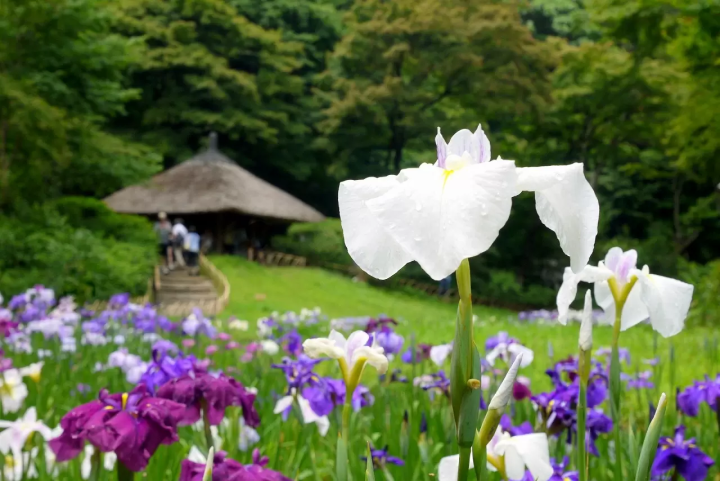
Photo by Pixta
Splashing purple and white across Japanese gardens a month before the rainy season, irises are admired for their resilience and beauty.
There are various types of irises in Japan, with two main varieties: Shobu, which have white, light purple, and pink blooms, and Kakitsubata, with a distinctive deep purple color.
The Shobu irises bloom in early May and are associated with Children's Day (May 5). Their thin, sharp leaves resemble swords, making irises symbols of loyalty and protection.
Kakitsubata irises typically bloom in June. They are shorter than other irises, with thicker, less sharp leaves, giving them a more graceful and feminine appearance.
Featured extensively in Japanese poetry, literature, and art, irises are celebrated throughout Japan. During their season, Tokyo hosts magnificent iris festivals like the Katsushika Iris Festival, and in Chiba, the Suigo Itako Iris Festival.
For Kakitsubata irises, visit Meiji Jingu Shrine’s Garden and Nezu Art Museum’s Garden in Tokyo.
Read also
16. Roses (May - June, September - October)
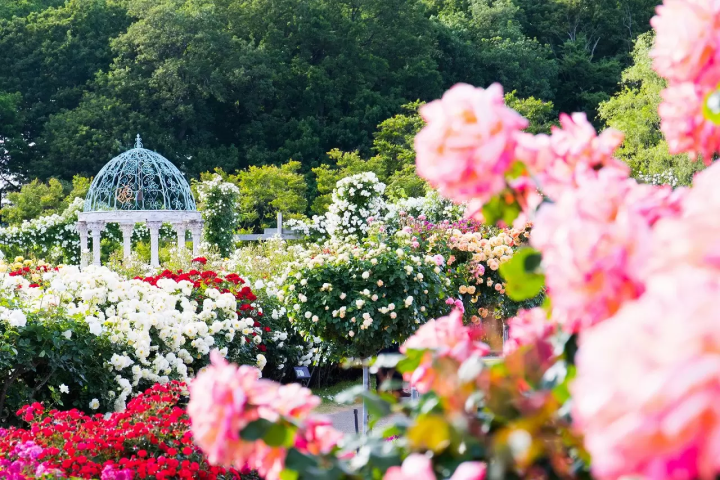
Photo by Pixta
Roses, symbols of elegance, romance, and harmony, have captured hearts worldwide. In Japan, diverse rose gardens offer residents and visitors a relaxing retreat, blooming in spring or autumn depending on the species. These flowers bring warm, cheerful colors and sweet fragrances to different seasons.
Roses also inspire Japanese art, poetry, and design—often encountered in kimono patterns, Noh and Kabuki theater sets, and delicate porcelain. They embody profound beauty and emotional depth in traditional motifs, enriching Japan's artistic heritage.
Popular spots to see roses include Jindai Botanical Gardens in Tokyo, Yokohama English Garden, Keisei Rose Garden in Chiba, and Huis Ten Bosch in Nagasaki.
17. Poppies (May)
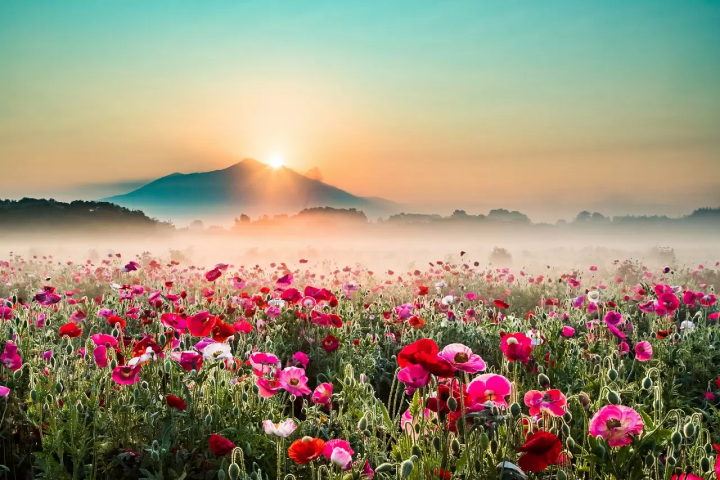
Photo by Pixta
Appearing in countryside fields from late spring to early summer, vibrant poppies bloom in shades of red, pink, and white across Japan. Symbolizing peace, remembrance, and fleeting beauty, poppies have inspired Japanese art, literature, and design.
Japan offers enchanting flower fields reminiscent of fairy tales. Popular spots for stunning poppy views include Sky of Poppies at Sainokuni Fureai Ranch in Misawa, Saitama; Kokaigawa Fureai Park in Ibaraki; Hirai Sports Park in Tokyo; and Awaji Hanasajiki Garden in Hyogo.
Read also
Japanese Flowers in June
18. Hydrangea (Mid-May - June)
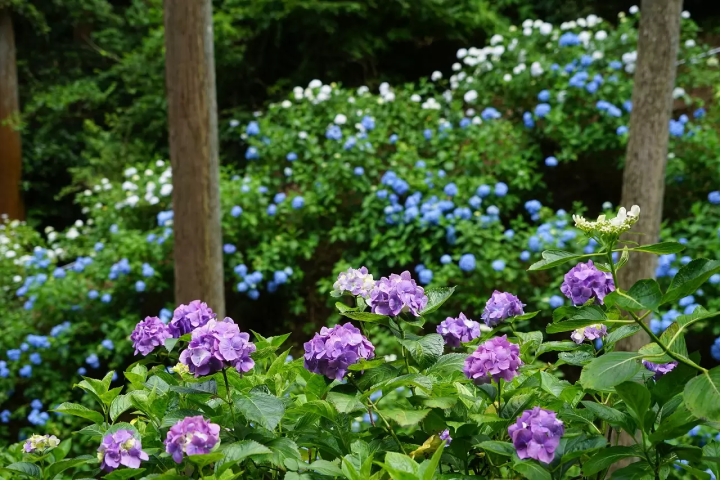
Photo by Pixta
Adding vibrant purples, blues, pinks, and whites to Japan’s rainy season, hydrangeas flourish across the country, spreading joy during this often rough weather.
In Japan, hydrangeas symbolize gratitude, understanding, heartfelt emotions, apology, and forgiveness.
With an umbrella in hand, visitors can enjoy viewing these blossoms and exploring their rich significance in Japanese art, poetry, and literature.
Famous locations to see hydrangeas include Minamisawa Ajisai Mountain in Tokyo, Meigetsuin Temple in Kamakura, Todaiji Temple in Nara, and Hakone Tozan Railway in Kanagawa.
Japanese Flowers in July
19. Lotus Flowers (July - August)
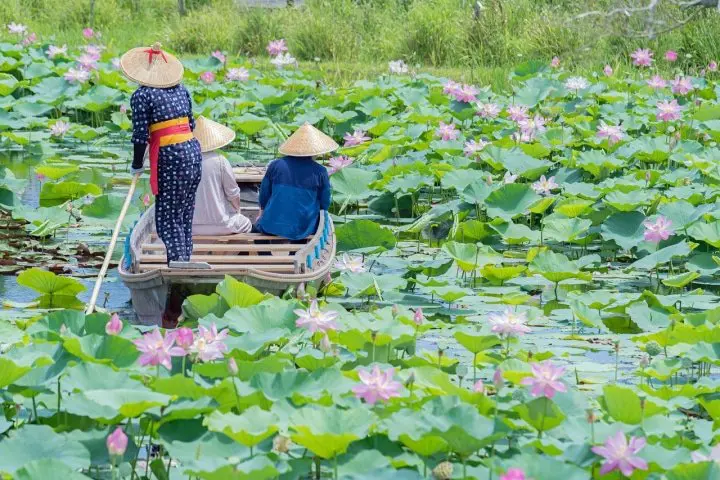
Photo by Pixta
Lotus flowers are ancient symbols of purity, enlightenment, rebirth, and spiritual awakening in Japan. Blooming each early summer, these flowers are closely associated with Buddhism and appear in artwork, Buddhist statues, paintings, and ceramics.
For those visiting Japan from July to mid-August, beautiful lotus displays can be enjoyed at locations such as Ueno Park in Tokyo and Suigo Sawara Ayame Park in Chiba.
20. Morning Glory / Heavenly Blue (July - August)

Heavenly Blue, known as Asagao in Japanese, features charming blue, purple, and magenta flowers with a distinctive white outline, forming star-like patterns.
In Japan, they are symbols of remembrance, nostalgia, and connection with loved ones. In Buddhism, they represent fleeting beauty, similar to cherry blossoms.
Blooming in summer and opening in the early morning—hence the name "morning glory"—these flowers symbolize optimism and new beginnings.
Visitors to Japan during this season can enjoy festivals celebrating Asagao, such as the Asagao Festival in Iriya, Tokyo. Other popular spots include Ueno Toshogu Shrine in Tokyo and Hokokuji Temple in Kamakura.
21. Lavender (July - early August)

Photo by Pixta
Japan’s lavender fields create stunning purple and lavender landscapes—truly a sight to behold. Due to their calming aroma, many flock to these fields each early summer to enjoy the tranquility and vibrant colors they bring to the countryside.
Symbolizing relaxation, serenity, and peace, lavender has long been valued worldwide for its wellness and recuperation benefits.
Picturesque lavender locations in Japan include Furano in Hokkaido, where sprawling fields at locations like the Tomita Farm showcase the vibrant beauty of lavender. Other popular spots are Tambara Lavender Park in Gunma and Oishi Park near Mt. Fuji.
Japanese Flowers in August
22. Rengeshoma / False Anemone (late July - August)
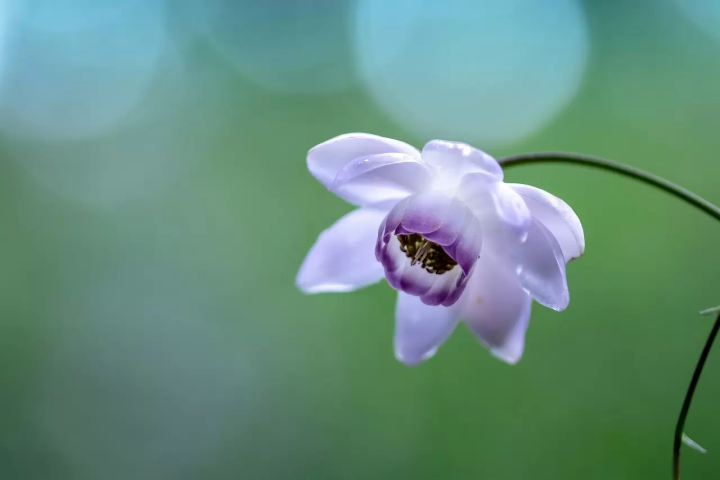
Photo by Pixta
Japan's hidden summer gem, Rengeshoma, are rare, delicate flowers that thrive along cool mountain trail pathways. Nestled among forest greenery, these fairy-like buttercups bloom in summer, adding bursts of purple to shaded areas and creating a magical landscape.
Named for their resemblance to upside-down lotus flowers (renge), Rengeshoma are often called forest fairies.
Native to Japan and rare in the wild, Rengeshoma can only be found in woodland areas on the Pacific side of central Honshu.
Visitors to Tokyo in summer are in for a treat—just two hours from Shinjuku, around 50,000 of these stunning flowers bloom at the Mt. Mitake Ropeway summit each August during the Rengeshoma Festival.
23. Sunflowers (July - August)
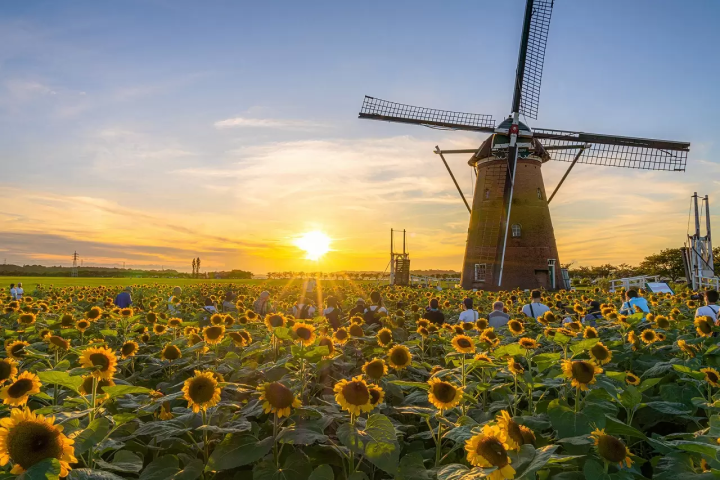
Photo by Pixta
Following the path of the sun, sunflowers—called Himawari in Japanese—symbolize loyalty, adoration, and longevity in Japan. Blooming each July as summer heat rises, these golden flowers are a favorite subject in Japanese art, appearing in paintings, textiles, and more.
A true summer icon alongside watermelon, yukata, fireworks, and ramune, sunflower fields attract many visitors each year. Families, friends, and even pets visit these sprawling fields to enjoy the scenery and capture beautiful memories. Popular locations include Sakura Furusato Square in Chiba, Hokuryu Sunflower Village in Hokkaido, and Yamanakako Hanano Miyako Park in Yamanashi.
Read also
Japanese Flowers in September
24. Spider Lilies (mid-September - October)
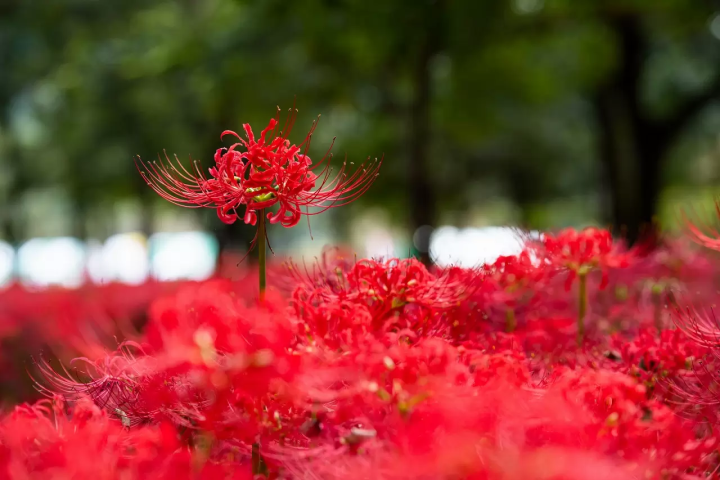
Photo by Pixta
Said to bloom in the afterlife realm, red spider lilies are deeply associated with death and rebirth. Often planted around grave sites to guide the deceased, they symbolize remembrance, mourning, and protection. These striking flowers have also been featured in various anime and manga, from Tokyo Ghoul to Demon Slayer.
From mid-September to early October, visitors can admire fields and parks filled with thousands of vibrant vermilion red spider lilies. Popular viewing spots include Kinchakuda Park in Saitama and Gon's Autumn Festival along the Yakachi River in Handa City, Aichi.
25. Silver Grass (September - October)
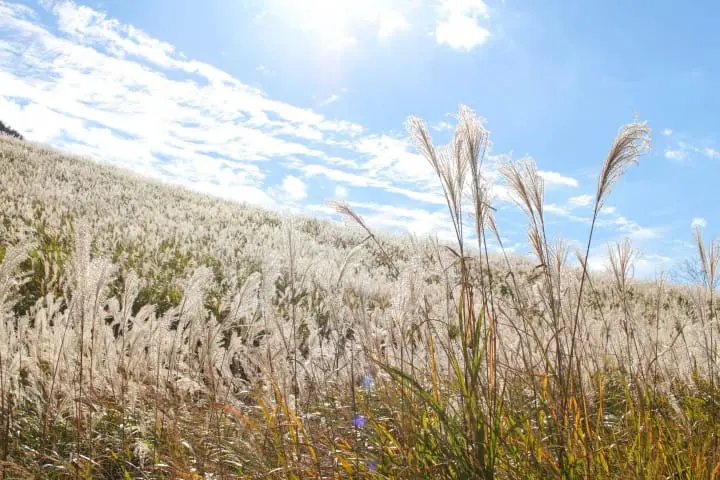
Silver Grass, also known as Japanese Pampas Grass, is a classic autumn herald in Japan. Its feathery plumes bloom across rolling fields and highlands, turning the countryside into a stunning silver ocean.
Featured in Japanese art and often used in ikebana arrangements, Silver Grass also decorates landscapes during the Autumn Tsukimi Festival and has historically been believed to provide protection against evil in Okinawa.
To enjoy these beautiful plants, visit the Sengokuhara Pampas Grass Field in Hakone, just a day trip from Tokyo, or Oishi Highland in Wakayama Prefecture, from late September to early November.
Read also
Japanese Flowers in October
26. Kochia (October)

Kochia at Miharashi Hill in autumn
Kochia, also known as summer cypress, can be enjoyed in both summer and autumn in Japan. These spiky, spherical plants cover landscapes in vibrant green during summer, transforming into burnt orange and bright red from mid-October onward.
Spanning large fields, visitors can experience stunning autumn colors against clear blue skies at top spots like Hitachi Seaside Park in Ibaraki, with its rolling hills, winding paths, and ferris wheel views, as well as Oishi Park in Yamanashi, where fiery red Kochia fields frame Mount Fuji beautifully.
Read also
27. Cosmos Flowers (October - November)

Photo by Pixta
Gently swaying in the breeze, delicate cosmos flowers bloom across rolling fields in Japan, offering stunning bursts of color and beautiful scenery.
With hues of pink, orange, and white, these flowers are often called the "cherry blossoms of fall" and bloom from June to November in various regions.
Vibrant and picturesque, popular spots to experience cosmos include Akebonoyama Agricultural Park in Chiba, Hannyaji Temple in Nara, and Nokonoshima Island Park in Fukuoka.
28. Kinmokusei / Osmanthus (late September - October)
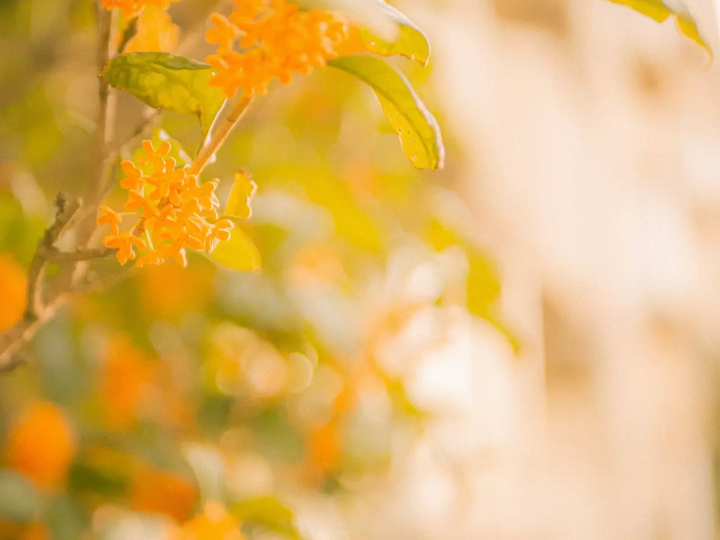
Photo by Pixta
Transforming parks and streets into an aroma wonderland, Kimokusei, or Sweet Osmanthus, fills the air with a delightful fragrance each autumn.
Its sweet, delicious scent often catches explorers by surprise, prompting them to search for the source—none other than the Kinmokusei trees!
These charming trees are easy to recognize by their dainty bright orange flowers surrounded by green leaves.
While they can be found scattered through residential areas, for a full experience, visit places like Jindai Botanical Park or the National Showa Kinen Park, where around 500 osmanthus trees bloom from late September to October.
Japanese Flowers in November
29. Chrysanthemums (September - November)

Photo by Pixta
Chrysanthemums, Japan's imperial symbol and national flower, have been treasured for centuries since ancient times. Today, these elegant flowers are featured in traditional art, kimono patterns, ikebana art, and even on Japan's passports as a national symbol.
From September to November, Japan celebrates these regal blooms through various festivals and events.
Visitors can enjoy vibrant displays of yellow, pink, red, and more at venues such as Hiroshima Castle's Chrysanthemum Exhibition, the Sera Kogen Dahlia and Chrysanthemum Festival, and Hibiya Park’s chrysanthemum displays.
30. Gingko Foliage (November)
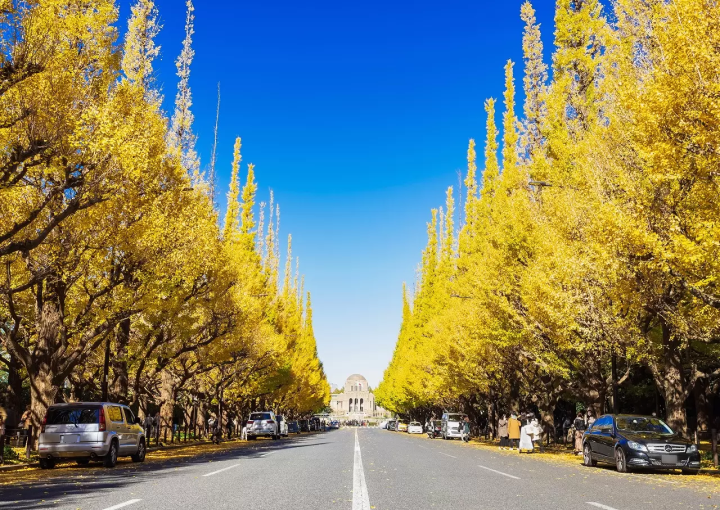
Photo by Pixta
Ginkgo trees are renowned for their health benefits and their ability to boost serotonin, especially every autumn. Their leafy green foliage transforms into brilliant gold, adding vibrant pops of color across Japan and attracting visitors to enjoy their striking beauty.
Popular spots include Tokyo's Meiji Jingu Gaien avenue, where a 300-meter path of golden ginkgo trees leads to the Meiji Memorial Museum, and Kotokuji Temple in Akiruno, where a carpet of golden leaves covers the temple grounds.
Exploring these ginkgo displays is a must during your visit to Japan in autumn!
Japanese Flowers in December
31. Maple Foliage (late November - early December)
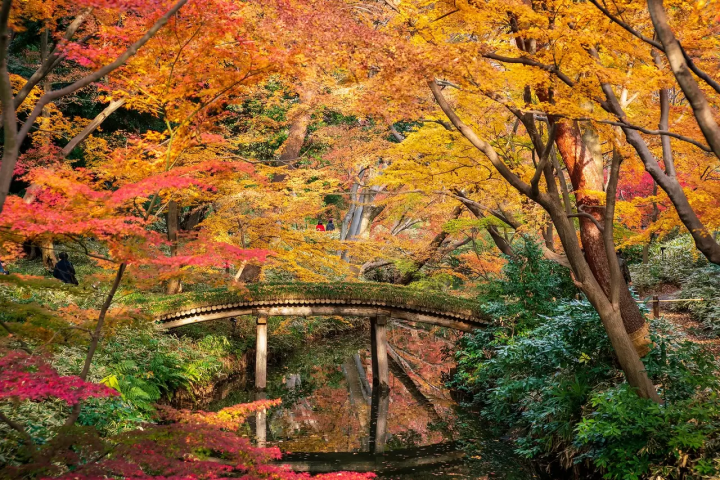
Photo by Pixta
Japanese maple leaves paint the landscapes in stunning reds and golds, starting in Hokkaido in October and gradually transforming the entire country into a golden paradise through early December.
The seasons of cherry blossoms and maple leaves are among the most popular for travelers, offering breathtaking scenery in Japanese gardens, temples, and historic sites.
During this season, visitors can enjoy mesmerizing autumn foliage views and traditional Japanese scenery that have inspired artists for centuries. Notable viewing spots include Kiyomizudera Temple in Kyoto and Rikugien Garden in Tokyo, both renowned for their beautiful architecture and nighttime illuminations.
Enjoy Flower Viewing in Japan
Flowers are an important part of Japanese culture so why not enjoy the blooms that are in season during your visit?
We recommend checking the official website of the facilities and gardens you plan to visit to see the exact operation hours.
Main image by Pixta
Assistant editor at MATCHA since 2023, Kate is a photographer who enjoys traveling Japan's hidden gems and adventuring off the beaten path. Living in Japan since 2018, she has traveled across different areas of Japan. From indulging in Aomori’s apple pies and fiery festivals to exploring the quaint charm of Nagasaki’s cat-filled streets she is always searching for new areas full of atmospheric beauty, festivals, and seasonal events to capture on camera.







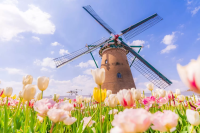





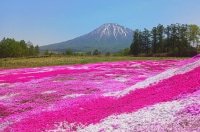













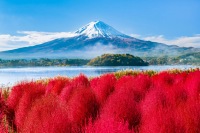

![[Shizuoka/Izu] Shuzenji Onsen chrysanthemum decoration](https://resources.matcha-jp.com/resize/200x2000/2023/08/12-143158.webp)
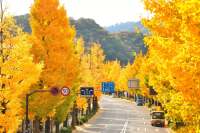
















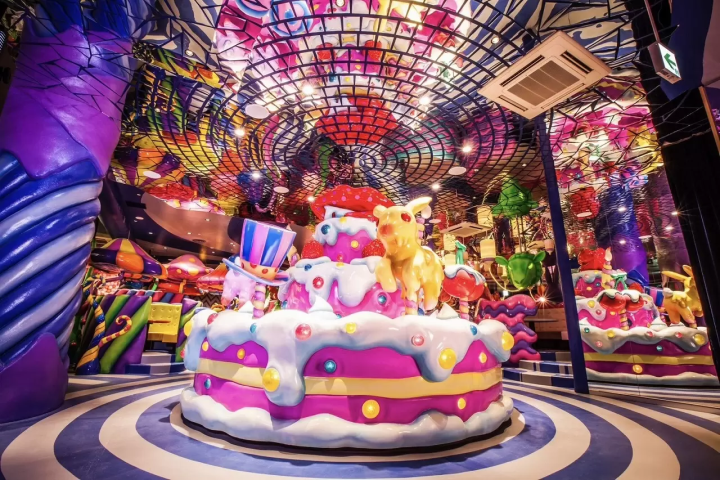
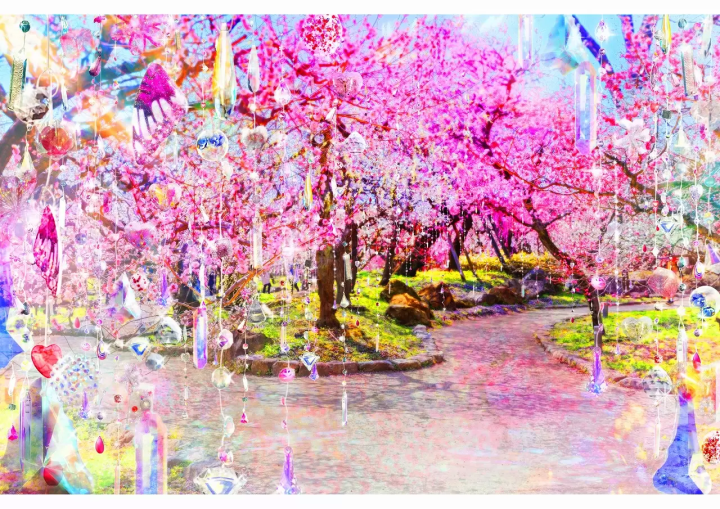






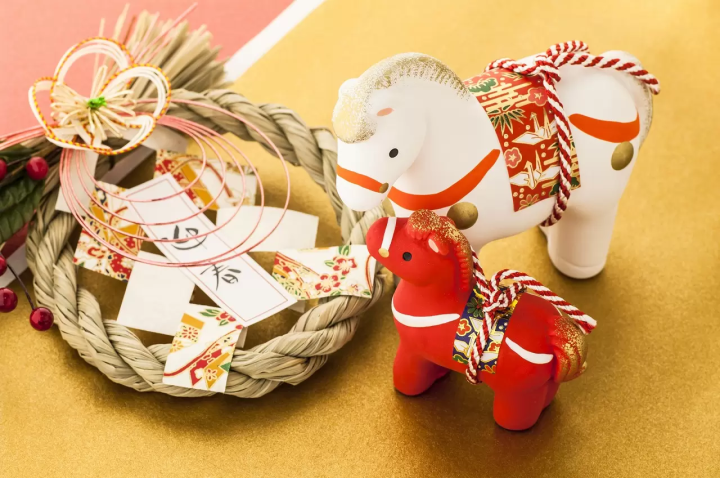


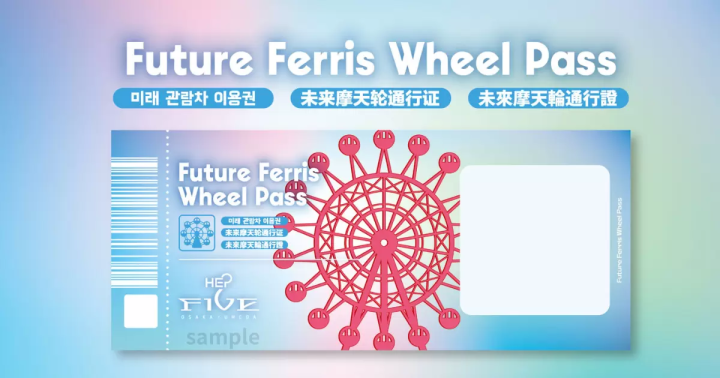

![[Coupon Available] Attention Overseas Winter Sports Fans! Nagano's Sports Depot Has Evolved](https://resources.matcha-jp.com/resize/720x2000/2026/01/05-254819.webp)
![[2 hours from Tokyo ] 10 Quiet and Breathtaking Views of Mount Fuji in Yamanashi Hokuto City , Yamanashi - Part 2](https://resources.matcha-jp.com/resize/720x2000/2025/12/16-253037.webp)